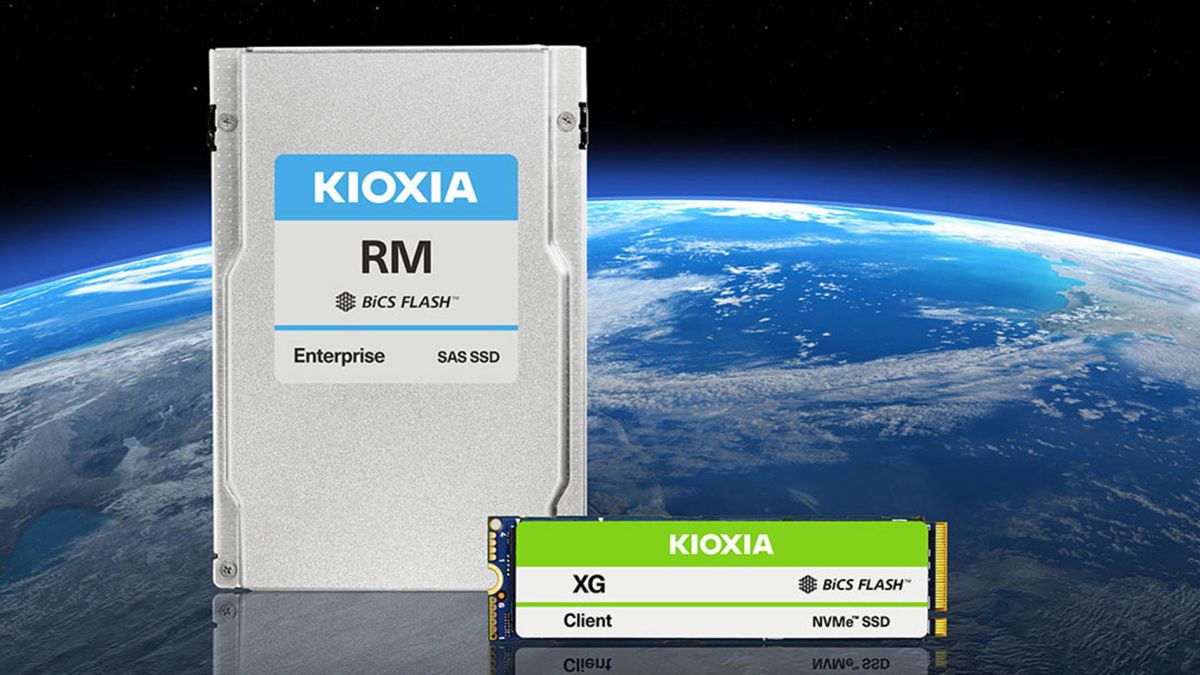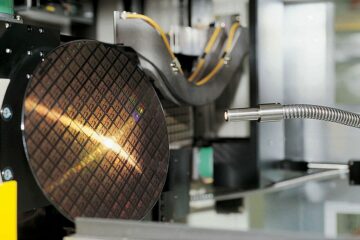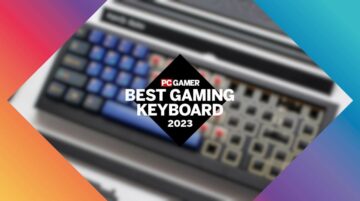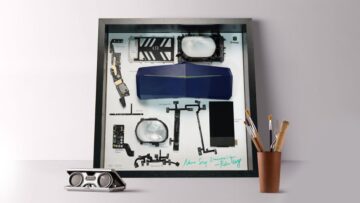
Space and nerds often go hand in hand; there’s often so much space themed stuff in our PC gaming lives that we don’t even realise it. We see amazing fan-made miracles like this beautiful Star Trek Shuttle PC (opens in new tab), and gorgeous gear like these beautiful Destiny 2 space themed peripherals by SteelSeries (opens in new tab). Not to mention how often PC games are set in space.
Something else PC gamers can’t get enough of is storage. Whether you need more space for storing games, programs, or other entertainment SSDs are currently the way to go for fast and reliable regularly used storage. As it turns out, this is as true on Earth as it is above.
As it turns out, the International Space Station is also in need of some extra storage. The Hewlett Packard Enterprise (HPE) Spaceborne Computer-2 is the first commercial edge computing and AI-enabled system to be used in space, allowing scientists on the station to analyse data without needing to send it back to Earth. The time saved on transfer and communication should enable researchers to get much more work done while floating lazily around in space.
To help with the high-performance tasks the HPE Spaceborne Computer-2 will be completing, Kioxia is providing flash based SSDs to be sent up to the great beyond. Kioxia is known for making serious enterprise storage solutions, like these drool worthy CM7s (opens in new tab). These will include the Kioxia RM Series Value SAS and Kioxia XG Series NVMe SSDs to help with scientific simulations, deep learning, and real-time image processing applications aboard the ISS.
The Kioxia RM SAS is an enterprise product made to work with HPE ProLiant servers, so in theory should work great with the HPE Spaceborne Computer-2, while the NVMe drive is known for high performance in gaming laptops and PCs. These aren’t drives I’ve personally had the pleasure of using, but we do see Kioxia flash working great when packaged in other storage solutions like one of our favourite PCIe 4.0 SSD (opens in new tab), the WD Black SN770. (opens in new tab) To be fair, we haven’t used these in space before though, either.
According to Kioxia, SSD style flash storage is the best for space. “These flash-based SSDs are better-suited than traditional hard disk drive storage to withstand the power, performance and reliability requirements of outer space, as they have no moving parts, are less susceptible to electromagnetic waves and provide faster performance.” reads the press release (opens in new tab).
We have come such a long way since the first spacefaring computers like the Gemini Guidance computer, which had a 39-bit memory in a unique ferrite core. It’s definitely very cool, but nothing compared to what we’re seeing today. Companies like HP and Kioxa sending SSDs up into space is testament to how far computing in the final frontier has come. I only ask that they send me up too next time, I’d make a great delivery person.
- SEO Powered Content & PR Distribution. Get Amplified Today.
- Platoblockchain. Web3 Metaverse Intelligence. Knowledge Amplified. Access Here.
- Source: https://www.pcgamer.com/ssds-shot-into-space-to-help-with-iss-computing
- 1
- 4.0
- 7
- a
- Allowing
- amazing
- applications
- ARE
- around
- as
- based
- BE
- beautiful
- before
- BEST
- beyond
- Black
- by
- CAN
- commercial
- Communication
- Companies
- compared
- computer
- computers
- computing
- Core
- currently
- data
- deep
- deep learning
- definitely
- delivery
- Destiny
- Destiny 2
- drive
- earth
- Edge
- edge computing
- enable
- Enterprise
- Entertainment
- fair
- FAST
- faster
- Final
- First
- Flash
- For
- Gamers
- Games
- Gaming
- Gear
- Gemini
- great
- guidance
- hand
- Hard
- Have
- help
- High
- How
- HP
- HPE
- HTML
- HTTPS
- i
- image
- in
- International
- international space station
- Is
- ISS
- IT
- jpg
- known
- laptops
- learning
- like
- lives
- Long
- make
- Making
- memory
- more
- moving
- need
- New
- of
- on
- One
- open
- opens
- Other
- outer space
- PC
- pc games
- PC Gaming
- PCs
- performance
- peripherals
- personally
- plato
- plato data intelligence
- platodata
- platogaming
- player
- power
- press
- processing
- Product
- Programs
- Provide
- providing
- RE
- real-time
- Reliability
- reliable
- Requirements
- researchers
- s
- SAS
- scientists
- Series
- servers
- set
- should
- So
- Solutions
- some
- Space
- space station
- SSD
- station
- storage
- style
- such
- system
- TAB
- testament
- that
- The
- the international
- Themed
- These
- time
- to
- Today
- traditional
- transfer
- unique
- up
- value
- waves
- way
- What
- while
- will
- with
- Work
- working
- zephyrnet









